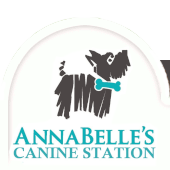Author: Ameerah Gillespie • argillespi@lsj.com • December 21, 2010 • From Lansing State Journal*
If there’s one thing that Benny loves to do, it would be taking care of his pack.
Out of a class of 80, he’s established his spot as the popular pint-size in the room.
“I love Benny, the little Chihuahua that started with us,” said Ann Andrews, 59, who is one of the co-owners of AnnaBelle’s Pet Station in downtown Lansing. “He’s so funny when his dad comes to pick him up, his dad will hold his little crate and Benny literally jumps from there right into it.”
Benny is among many cool city dogs that attend AnnaBelle’s for training, grooming and regular day care. Thus the name @coolcitydogs on Twitter, a regular pro-Lansing voice in social media.
The one-stop pet drop dream turned to reality in 2009 with the help of partner Angela Brown. Andrews and Brown were lawyers at Honigman Miller Schwartz and Cohn law firm in Lansing. But the distance to take her dogs to day care became an issue for Andrews.
“We were both in the litigation section doing arbitrations and trials and depositions and all the things that litigators do,” Andrews said.
Andrews stated that she and Brown have new jobs in law, but they’ve freed up enough time to work at AnnaBelle’s during evenings and weekends.
Andrews said one of the main reasons people give up their dogs are due to behavioral issues. Both Brown and Andrews said they want to change that by teaching dogs social skills.
No matter how big. No matter what kind.
“The thing that touches my heart is to see a dog that comes in that’s fearful, reactive and to finish up the six-week class you know, happy and anxious to come here,” Andrews said.
Pele is an 11-month-old Keeshond and spends time at AnnaBelle’s several times a month. His owner, Kara Schmitt, says she has seen positive changes in him.“As many challenges as we’ve had, we’ve been so lucky with the staff that we’ve found,” Brown said. “A lot of that was really personal connections we all had long before we were even thinking about AnnaBelle’s … and to me that’s just been the amazing thing.”
“I’m a happy camper,” Schmitt said. “Pele’s very smart, so when they would be working on the second or the third night of class, he’s already on the fifth night of class.”
Brown says she feels lucky their company has done well even in a depressed economy.
“As many challenges as we’ve had, we’ve been so lucky with the staff that we’ve found,” Brown said. “A lot of that was really personal connections we all had long before we were even thinking about AnnaBelle’s … and to me that’s just been the amazing thing.”
*Reprinted with express written permission.




















